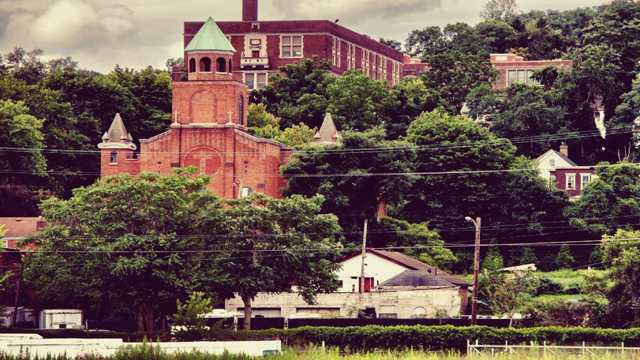Hazelwood, a neighborhood in Pittsburgh, faces many challenges. It is often described as a food desert, meaning residents have limited access to fresh and affordable food. However, in the midst of this struggle, a new bakery has opened in a former grocery store, offering a “little taste of France.” While this may seem like a positive change, some residents question who this bakery truly serves.
The Grocery Store Gap
The nearest grocery store is a Giant Eagle, located a mile and a half away in Greenfield. Longtime resident Saundra Cole-McKamey, 58, expresses her concerns. “We didn’t ask for that at all,” she says. Many residents feel that developers come into their community without asking what they really want or need.
This sentiment extends to a large tract of land just north of the business district, known as Hazelwood Green. This area has historical ties to the neighborhood and is expected to play a significant role in its future.
New Developments on the Horizon
This fall, the University of Pittsburgh plans to start building a biomanufacturing facility called BioForge. The university aims to transform the area, dubbing it “Bio Valley.” Before construction can begin, the project must be approved by the City Planning Commission, which will hold a public hearing. This hearing will allow residents to voice their opinions and concerns about the development.
Carnegie Mellon University is also involved in the area. It recently received approval to build a Robotics Innovation Center on the Hazelwood Green site. Both universities claim to be engaging with residents to ensure their plans benefit the community. However, many residents feel left out of the conversation.
Community Voices
Cole-McKamey is part of a group called the Greater Hazelwood Coalition Against Racial and Ethnic Disparities. This group received approval to build a grocery store in the neighborhood, which Cole-McKamey believes is a critical need. “If our community knew that [Hazelwood Green] land was valuable, we could have bought it ourselves,” she says.
For much of the 20th century, the Jones & Laughlin Steel Company operated on the 178-acre Hazelwood Green site. The steel industry provided jobs but also polluted the area. When the plant closed in the 1990s, the neighborhood suffered. The population dropped from about 13,000 in 1960 to just under 4,000 by 2020. Today, poverty and unemployment rates are higher than the city average.
A Vision for the Future
The Almono Limited Partnership, which includes the Richard King Mellon Foundation, the Heinz Endowments, and the Claude Worthington Benedum Foundation, now owns most of Hazelwood Green. Their vision includes 3,500 mixed-income residential units, 30.6 acres of recreational space, and millions of square feet of office and retail space. They aim to create a “global center for tomorrow’s economy” focused on science and engineering.
Both Pitt and CMU hope to complete their projects by 2027 and 2025, respectively. They have received significant funding from the Richard King Mellon Foundation to support these developments.
Community Concerns
While many local leaders welcome the investment, some residents are skeptical. Pastor Lutual Love of Hazelwood’s Praise Temple Deliverance Church believes the developments benefit the developers more than the community. “I don’t see how what Pitt and them are doing is going to benefit the community,” he says.
Terri Shields, founder of JADA House International, shares similar concerns. She believes the university is presenting a pre-formed plan without truly engaging the community. “Pitt coming to Hazelwood and presenting this BioForge, it was something that they just didn’t come up with in a day,” she states.
Engaging the Community
Pitt has formed planning teams that include leaders from local organizations. These teams are exploring ways to ensure the neighborhood benefits from the new developments. They are focusing on STEM education, workforce development, and supporting existing residents and businesses.
Sonya Tilghman, executive director of the Hazelwood Initiative, is optimistic about the engagement efforts. She emphasizes the importance of “development without displacement.” The goal is to ensure that current residents are not pushed out as new developments arise.
Job Opportunities and Training
Many community members express the need for job opportunities linked to the new developments. Currently, only 56% of working-age residents in Greater Hazelwood are employed, compared to 76% citywide. The biomanufacturing facility is expected to create 900 construction jobs and over 170 full-time positions, with a focus on hiring local residents.
Pitt’s associate vice chancellor for economic development, Kinsey Casey, assures residents that they want to prioritize hiring from the community. “We want to make sure that Hazelwood residents have the first opportunity for those jobs,” she says.
The Path Forward
Despite the optimism, some residents remain cautious. Cole-McKamey worries that the development will not address the community’s most pressing needs, such as the lack of a full-service grocery store. “When [developers] came and asked what the No. 1 concern in the community was, everyone said ‘grocery store,’” she recalls.
Todd Stern, managing director of U3 Advisors, acknowledges concerns about gentrification but believes it is still early in the development process. He emphasizes that the foundations are committed to creating mixed-income and affordable housing.
Conclusion
As Hazelwood navigates its future, the balance between development and community needs remains crucial. While new projects promise investment and job opportunities, residents must be included in the conversation. The hope is that with continued engagement, Hazelwood can revitalize while ensuring that its long-time residents benefit from the changes.
The community is at a pivotal moment. With the right approach, Hazelwood can transform into a thriving neighborhood that honors its past while embracing a brighter future. As Cole-McKamey puts it, “If we are all at that same table, we can get things done.”

